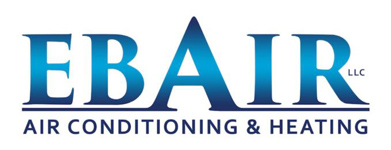We all like saving money on our monthly utility bills, but it just so happens there’s a way to do it when you aren’t even home.
The key is your thermostat. By making the most out of your thermostat, you can structure its daily schedule around your personal preferences. That means you can have different temperature settings for when you’re at home, away or even when you’re asleep.
By trying a few of these schedules, you can enjoy comfy temperatures while keeping more money in your pocket. Here are some ways your thermostat can save you money in the summer:
While at Home
Whenever you’re at home, you want to enjoy a comfortable temperature. It’s only natural to want your thermostat lower in the summer while inside to make the most of the cool air.
But in terms of energy efficiency, the best range for the summer is actually around 78 and 80 degrees Fahrenheit. With this adjustment, you’ll keep cool while still keeping your energy bills low.
While Out of the House
When setting the temperature for a vacation or other trip away from the house, it’s extremely common to move the thermostat higher for while they’re gone.
Depending on the local climate or your home’s location, you can set the thermostat to temperatures as high as 88 degrees while no one is home and then lower it back to the sweet spot of 78-80 degrees after you return. This way, your air conditioning unit won’t be working overtime to keep an empty house cool.
While Asleep
For a full night’s rest during summer weather, you want a temperature that’s nice and cool. A good rule of thumb is between 68-72 degrees Fahrenheit. You won’t have to worry about getting too hot or too cold when you are trying to get some rest.
Other Strategies for Lowering Energy Use:
- Put in a smart thermostat: Switching to a smart thermostat in the summer helps save money on energy costs by automatically adjusting to your lifestyle and personal preferences. It’ll take care of making changes while you are home or sleeping, before allowing it to warm up when the house is empty. With models like the Lennox iComfort, you have the ability to remotely access and change the temperature through your smartphone, tablet or laptop. Planning smart thermostat installation in your East Bernard home can be the simplest strategy for maintaining comfortable, yet energy-efficient temperatures even when you aren’t home.
- Update your existing HVAC system: A high-efficiency HVAC system can save money in the long run. If a system boasts high energy efficiency, you can also count on lower utility bills since more efficient equipment requires less energy to reach your preferred temperatures. Air conditioning installation in East Bernard is a great way to beat the heat in the summer.
- Schedule annual AC maintenance: Hiring a skilled professional to perform regular air conditioning maintenance in East Bernard can have a big impact on your monthly energy use. If you stay on top of cleaning key components like the coils, checking for damage and keeping vents clear of dust and debris, this can help your HVAC system perform better during day-to-day use.. Increasing efficiency also limits strain on the unit and lowers operational costs, lowering total energy use and eventually the total monthly bill.
- Clean or replace the air filter on a regular basis: Cleaning or replacing the air filter regularly saves money by helping air flow efficiently through your air conditioner. When filters become clogged, an AC unit has to work harder, and the strain can reduce the system’s life span and lead to breakdowns.
- Verify your attic has enough insulation: Insulation is one of the key components in any energy-efficient home, keeping the hot air outside and the cool air inside over the summer. The North American Insulation Manufacturers Association (NAIMA) suggests that homeowners living in southern climates should have at least 13-14 inches of insulation, while those in northern U.S. states should have 16-18 inches.
- Inspect your air ducts: Damage to the ventilation is capable of increasing your energy bills much more than 20 percent, plus it can also lead to problems with your water heater, clothes dryer and other appliances throughout your home. Checking your ductwork for leaks and sealing them can help with both these issues.
- Seal all other leaky spots in your home: Finding and sealing any remaining leaks in your home with caulk, foam sealant or weather-stripping helps keep things cooler during those hot summer days. Don’t forget to check for any gaps around windows, doors and even outdoor fixtures. Making time to seal leaks now can help you save a lot over time.
